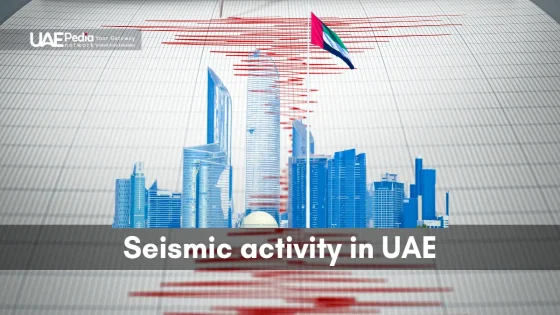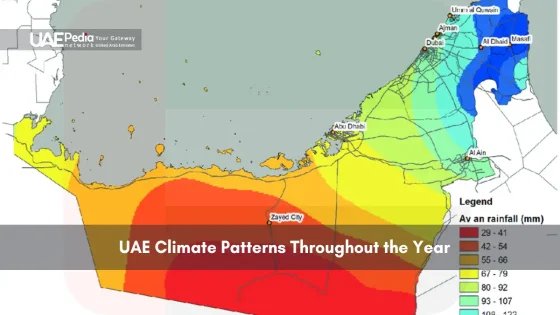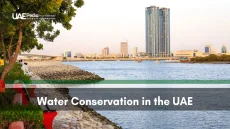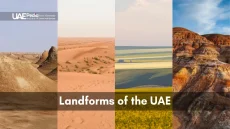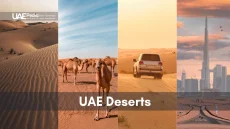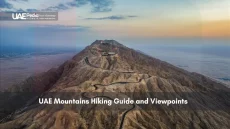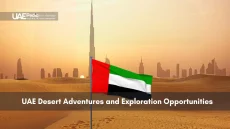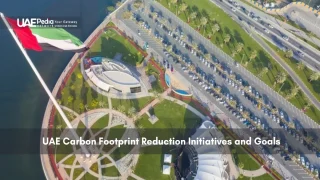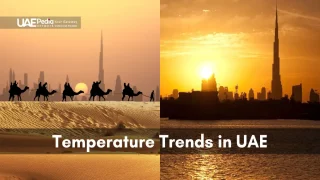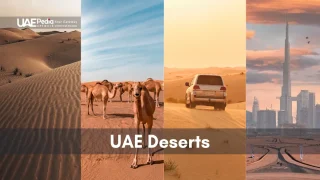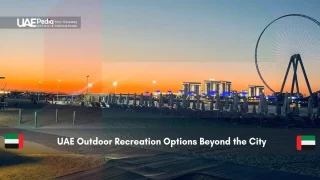What if we told you a single hectare of coastal forest here captures more carbon than four football fields of Amazon rainforest? These salt-tolerant giants along the Gulf’s shores aren’t just scenic backdrops—they’re climate warriors with roots deeper than their twisting branches.
These tidal ecosystems shelter over 60 fish species while buffering coastlines from storms. Their tangled roots filter pollutants and create nurseries for marine life, like nature’s version of a five-star underwater hotel. But their real superpower lies beneath the surface: studies show they lock away carbon four times faster than tropical forests.
Local communities have relied on these forests for centuries—using their wood for boats, leaves for medicine, and shade for gathering. Today, they’re frontline defenders against rising sea levels and extreme weather, proving tradition and innovation can grow side by side.
In this guide, we’ll explore:
- How ancient survival tactics meet modern conservation tech
- Surprising connections between fishing traditions and biodiversity
- Groundbreaking projects expanding green barriers against climate shifts
Exploring the Heritage and Significance of UAE Mangroves
What do wooden dhows and traditional medicine have in common? Both owe their legacy to the Qurm—a salt-tolerant marvel that shaped Emirati life for generations. These tidal forests weren’t just trees: they were hardware stores, pharmacies, and community hubs rolled into one twisty-rooted package.
Roots in Daily Life
Coastal families once harvested Qurm bark for tannins to treat leather. Fishermen carved its water-resistant wood into boats that danced through Gulf waves. “A house without Qurm is like a sky without stars,” elders would say—a testament to its role in shelter-building and cultural identity.
Visionary Greening Efforts
When Sheikh Zayed launched his forestation programs in the 1970s, he didn’t just plant trees—he cultivated national pride. Over 19 million saplings later, these efforts transformed barren coasts into climate shields. Traditional knowledge now fuels modern strategies: combining ancient fishing practices with satellite monitoring to protect marine species.
Today’s conservationists walk a path first cleared by ancestors. Every restored hectare honors centuries of coastal wisdom while fighting climate change—proving that heritage forests can grow new chapters.
Understanding UAE Mangroves: Their Unique Ecological Role
Imagine a forest that breathes underwater and walks on stilts—welcome to the saltwater wonderland of Abu Dhabi’s coastal guardians. These trees thrive where land and sea perform their daily tango, filtering salt through specialized roots while hosting bustling aquatic neighborhoods.
Key Species and Habitats
The Grey Mangrove (Avicennia marina) rules these brackish realms. Its pencil-like roots poke above tidal waters like snorkels, sheltering crabs darting between nurseries for juvenile fish. Over 60 bird species—from flamingos to herons—feast here during migrations, drawn by the buffet of crustaceans hiding in the mudflats.
Abu Dhabi’s intricate coastal landforms create ideal homes for these ecosystems. Look closely at low tide: you’ll spot baby sharks practicing evasion tactics in shallow pools, while oysters cling to submerged roots like nature’s jewelry.
Intertidal and Coastal Dynamics
Twice daily, tides flood these forests with seawater—a salty challenge most trees couldn’t handle. But here’s their trick: special glands excrete excess salt, leaving crystals that glitter on leaves like tiny diamonds. When waters recede, exposed roots trap sediment, building land faster than erosion can steal it.
These trees drink brackish cocktails—part fresh groundwater, part ocean brine—while locking away carbon dioxide at superhero speeds. Their secret? Peat-rich soil beneath their roots stores four times more CO₂ than Amazonian rainforests, making them climate warriors in a shifting world.
The Rich Biodiversity of Mangrove Ecosystems
Ever peeked into a tidal pool and discovered a hidden universe? That’s everyday magic in these saltwater forests—where roots become apartment complexes for crabs, and branches transform into avian food courts. These ecosystems pulse with life at every level, from microscopic plankton to migratory birds clocking frequent-flier miles.
Flora and Fauna Diversity
Picture this: tangled roots shelter baby sea turtles practicing their paddle strokes, while collared kingfishers dive-bomb for shrimp. The star player? Avicennia marina—the only mangrove tree species here—whose waxy leaves and stilt roots create a 24/7 buffet for over 120 fish species. Conservation teams recently spotted rare honeycomb stingrays gliding through nurseries protected by these woody labyrinths.
Three reasons these forests matter:
- Wildlife condos: 70% of commercial fish species spend their youth here—like snapper and grouper checking into nature’s safest daycare
- Endangered guests: Hawksbill turtles and Arabian collared kingfishers rely on these habitats for survival
- Climate teamwork: Crab burrows aerate soil, helping trees grow faster to lock away carbon
Local projects prove protection works. Researchers using AI-powered cameras in Abu Dhabi recorded a 22% increase in crab populations since 2020—a win for both conservation and the environment. As one marine biologist put it: “When we safeguard these ecosystems, we’re investing in nature’s stock market—and the dividends keep compounding.”
Ecosystem Services and Environmental Benefits
Think of these coastal forests as nature’s Swiss Army knife—multitasking masters that tackle climate change while boosting local economies. Their tangled roots work overtime, storing carbon like underground vaults and shielding shorelines from angry waves. Let’s unpack how these silent superheroes keep our planet—and coastal communities—thriving.
Blue Carbon Storage and Climate Mitigation
Beneath the mud lies a climate solution more powerful than most tech innovations. These ecosystems stash away 1,000 tons of CO₂ per hectare—four times Amazonian rainforest rates. How? Their peat-rich soils trap carbon for centuries, turning tidal zones into natural carbon capture facilities.
This isn’t just tree-hugger math. A 2023 study showed protected areas increased fish populations by 40% in two years. Healthier habitats mean bigger catches for fishermen and safer nurseries for marine life. As one researcher noted: “We’re not just saving trees—we’re securing dinner plates.”
Coastal Protection and Ecosystem Stability
When storm surges come knocking, these forests act as bodyguards. Their roots reduce wave energy by 70%, preventing erosion that could swallow beaches whole. Tour operators know this firsthand—eco-tourism revenue jumped 25% in regions with thriving coastal buffers.
| Ecosystem Service | Annual Benefit | Economic Impact |
|---|---|---|
| Carbon Sequestration | 1,000 tons CO₂/ha | $85M climate damage prevented |
| Coastal Erosion Reduction | 70% wave energy absorbed | $12M property protection |
| Fish Stock Support | 40% population increase | $30M fishery value |
The real magic? These services connect like puzzle pieces. Stable shorelines protect crab colonies that aerate soil for faster tree growth—which then stores more carbon. It’s nature’s perfect loop, proving environmental health and human wellbeing grow from the same roots.
Scientific Insights into Carbon Sequestration and Climate Resilience
What if trees kept savings accounts for the planet? These coastal ecosystems do exactly that—storing carbon in leaves, roots, and soil like nature’s piggy banks. Their secret lies in dual storage: 80% of captured CO₂ gets locked in oxygen-poor mud beneath their roots, creating climate vaults that last centuries.
Carbon vs. CO₂ Absorption Efficiency
Let’s crunch numbers. One hectare here absorbs 12 tons of CO₂ yearly—equivalent to taking 2,600 cars off the road. Compare that:
| Ecosystem | Annual CO₂ Absorption | Carbon Storage Duration |
|---|---|---|
| Coastal Wetlands | 12 tons/ha | 500+ years |
| Tropical Rainforest | 3 tons/ha | 100 years |
| Grasslands | 0.5 tons/ha | 10 years |
Why the difference? Their peat soils act like carbon sponges. As leaves drop and roots decay, organic matter gets trapped in salty mud—no oxygen means slower decomposition. It’s climate change’s kryptonite, buried safely underground.
Impact on Climate Change
Recent restoration activities show promising results. Projects planting 200,000 saplings annually now offset emissions from 45,000 homes. But the benefits multiply:
- Double-duty defense: Thriving forests buffer storms while filtering air pollutants
- Marine multiplier: Healthy roots boost fish stocks by 22% in adjacent waters
- Community catalyst: Eco-tours and planting programs raise awareness while funding conservation
As Dr. Amna Al Mansoori from the Environmental Agency notes: “Every seedling we plant today becomes tomorrow’s climate insurance policy.” With global CO₂ levels rising, these ecosystems offer more than hope—they deliver measurable results.
Mangrove Restoration and Conservation Projects in the UAE
How do you turn barren coastlines into thriving carbon vaults? The answer lies in ambitious restoration efforts transforming salt flats into lush green shields. Over 50,000 saplings now anchor tidal zones annually—each one a tiny climate warrior fighting sea level rise.
Community and Stakeholder Engagement
Local fishermen partner with scientists in Abu Dhabi’s Ghantoot Marine Reserve, tracking crab populations through citizen science apps. Corporate teams roll up sleeves for planting days—their muddy hands building natural barriers against rising seas. “Every seedling connects us to our heritage,” says project leader Fatima Al Hammadi. “When schools and businesses collaborate, we grow more than trees—we cultivate guardians for future generations.”
Innovative Restoration Techniques
Drones map optimal planting zones using 3D terrain models, while solar-powered sensors monitor soil salinity in real time. The Emirates Nature-WWF dashboard tracks progress across 12 sites, revealing how restored mangrove forests boost blue carbon storage by 18% annually. Three game-changing strategies:
- Bioengineered seedlings bred for extreme heat tolerance
- AI analysis predicting optimal growth conditions
- Modular floating nurseries protecting saplings from strong currents
These efforts don’t just combat sea level rise—they create living laboratories where tradition meets cutting-edge tech. Want to join the wave? Volunteer programs welcome both locals and visitors to get their boots wet for the cause.
Challenges and Threats Facing Mangrove Ecosystems
Picture a chessboard where nature battles urban expansion—this is the reality facing coastal forests along developed shorelines. While these ecosystems punch above their weight in climate benefits, they face mounting pressures that could undo decades of conservation progress.
Habitat Loss and Coastal Development
Construction cranes now outnumber herons in many areas, with 12% of tidal forests lost to waterfront projects since 2015. A 2022 study found each hectare destroyed releases 900 tons of stored carbon—equivalent to 200 cars driving nonstop for a year. Desalination plants compound the issue, altering water chemistry until saplings struggle to survive.
“We’re seeing salinity levels spike beyond what even these resilient trees can handle,” notes marine biologist Dr. Yasmin Al-Khalifa. “It’s like asking a marathon runner to sprint through quicksand.”
| Threat | Annual Impact | Project Response |
|---|---|---|
| Urban Expansion | 150 hectares lost | Blue Shield Initiative (2021-present) |
| Salinity Shifts | +22% since 2000 | Salt-tolerant seedling trials |
| Sediment Disruption | 40% reduced crab populations | Artificial reef installations |
Sea Level Rise and Salinity Changes
Waters here creep upward 5mm yearly—double the global average. By 2050, models predict 30cm rises could drown 20% of existing forests. But hope floats: innovative projects like modular breakwaters combine traditional knowledge with 3D-printed designs to buffer waves.
Three frontline strategies making waves:
- AI-powered elevation mapping to identify resilient zones
- Community “root guardian” programs training locals in erosion control
- Floating nurseries protecting saplings during storm surges
As restoration specialist Amir Hassan puts it: “We’re not just planting trees—we’re engineering climate resilience.” With every bioengineered seedling taking root, these ecosystems rewrite their survival playbook.
Community Involvement and Volunteer-Led Initiatives
What does an escape room have to do with saving the planet? Ask the teens who designed the Mangrove Mystery Challenge—a hands-on game teaching players how coastal ecosystems combat climate change. This creative approach exemplifies how grassroots efforts are rewriting the rules of environmental action.
During COP28, over 2,000 volunteers joined a community planting initiative, getting knee-deep in tidal mud to secure 15,000 saplings. “We’re not just digging holes,” shared 17-year-old participant Aisha Al-Mansoori. “We’re building climate shields—one root at a time.”
Environmental Activism and Youth Engagement
Schools now integrate shoreline protection into STEM programs. Students monitor water quality using DIY sensors while tracking crab populations through citizen science apps. Research shows these hands-on experiences increase long-term environmental stewardship by 63%.
Three ways visitors contribute:
- Join weekend planting sessions—no expertise needed, just enthusiasm
- Document wildlife through photo journals used by conservation scientists
- Support coastal erosion prevention projects during eco-tourism visits
As one volunteer coordinator puts it: “Every muddy shoe tells a story of growth.” Whether you’re here for a week or a lifetime, these efforts prove collective action grows stronger when communities and visitors nurture it together.
Embracing the Future: Sustaining Our UAE Mangrove Ecosystems
Imagine leaving a legacy that grows taller with each tide—where every sapling planted today becomes tomorrow’s shoreline shield. These salt-tolerant forests stand at a crossroads, balancing urgent threats like habitat loss and rising waters with groundbreaking solutions rooted in community wisdom.
Three keys to lasting success:
- Smart planting: Prioritize climate-resilient zones where new growth can buffer cities from storm surges
- Soil stewardship: Protect carbon-rich sediment through modular breakwaters and AI-guided management
- Shared responsibility: Expand citizen science programs that turn beach cleanups into data-gathering missions
Lessons from recent projects reveal a powerful truth: when we nurture these ecosystems, they return the favor tenfold. Blue carbon storage soars, fish populations rebound, and coastlines gain natural armor against rising seas. But progress hinges on addressing loss through innovative partnerships—like Dubai’s new floating nurseries combining 3D printing with traditional fishing knowledge.
The path forward isn’t just about conservation—it’s about co-creation. Join coastal cleanups, adopt a sapling through virtual programs, or simply spread the word. Together, we can ensure these living climate solutions keep thriving for generations chasing crabs through tangled roots at low tide.
These coastal powerhouses trap up to 4x more carbon dioxide than tropical rainforests by locking it in their roots and soil. Their salty, muddy habitats act like climate-saving vaults—making them vital allies against global warming.
Absolutely! Organizations like Emirates Nature-WWF host volunteer days in Abu Dhabi and Umm Al Quwain. You’ll get muddy, learn restoration techniques, and leave knowing your saplings will grow into climate warriors.
Yes—their dense root networks reduce wave energy by 75%, shielding coastal areas. After the 2020 Cyclone Shaheen, Oman’s restored mangroves minimized flood damage, proving their “natural barrier” superpower.
Look for flamingos wading through tidal creeks, endangered hawksbill turtles nesting nearby, and over 60 fish species like Hammour fry hiding in roots. Don’t forget the fiddler crabs—tiny engineers aerating the soil!
Faster than average sea rise in the Gulf risks “drowning” mangroves if they can’t migrate inland. Increased salinity also stresses younger trees. Projects like Dubai’s 100 Million Mangroves Initiative use elevation mapping to plant resilient zones.
Paddle responsibly with operators like Jubail Island’s guided tours. Fees often fund research and cleanup efforts. Pro tip: Visit at high tide to glide smoothly through channels without disturbing nurseries.
Historically, communities used mangrove timber for building, tannins for leather, and leaves for herbal remedies. Today, cultural festivals like the Mangrove Walk in Umm Al Emarat Park celebrate this enduring bond.
In hard-to-reach areas, drones drop biodegradable seed pods pre-germinated in nurseries. This tech lets scientists plant 10,000 seeds daily—a game-changer for hitting the UAE’s 2030 carbon reduction goals.
Smart planning makes it possible. Saadiyat Island’s beaches were redesigned to protect existing trees, while new Abu Dhabi highways incorporate elevated bridges to maintain tidal flows. It’s all about balancing growth and green.
Visit The Jubail Mangrove Park’s boardwalks with AR-enabled educational displays. For deeper dives, NYU Abu Dhabi’s Marine Biology Lab shares real-time data on carbon capture rates and species adaptation studies.

